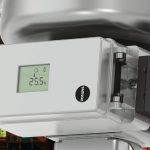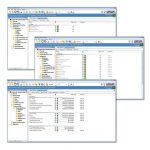There are obvious benefits provided particularly by diagnostic functions integrated directly into the positioner: round-the-clock monitoring of the control valve pinpoints the causes of possible malfunctions. In an ideal case, the event (i. e. a failure) can be prevented because the valve diagnostics identify weaknesses in a control valve ahead of time. This allows plant operators to bring forward necessary maintenance work and prevent plant shutdowns.
Authors Manuel Hinkelmann Product Management and Marketing for Positioners and Valve Accessories, Samson Monika Schneider Technical Documentation, Samson
Valve diagnostics are based on the continuous collection of important data on control operation and the control valve itself in the positioner. This includes, for example, recording the targeted valve position and the actual valve position reached (set point and actual value), adding up the travel cycles performed and repeatedly saving the zero point. However, it is not possible to draw any sound conclusions on the control valve’s state based merely on this collected statistical data. This requires the data to be analysed. Many of the diagnostic systems available on the market only reveal their full functionality when used together with an external software tool. This solution has one major weakness: the collected data, its assessment and consequently the information on the control valve state depend on the software and require a connection to external systems. On site, the control valve state can often only be read off on the positioner with restrictions. This is different in positioner designs with integrated, on-board diagnostics. There, the control valve data is not only collected but also analysed in the positioner, which makes important diagnostic data and functions available in the field independently of software and communication connections. Samson has over a decade of experience in integrated valve diagnostics. Right from the start, the instrumentation and controls specialist headquartered in Frankfurt am Main, Germany, focused on decentralised methods for analysing measured data. The Expertplus valve diagnostics integrated into the 3730 and 3731 positioner series monitor the control valve throughout its entire service life – 24 hours a day, seven days a week – without impairing the valve’s control response at any time during the positioner’s life cycle. The diagnostics check the start-up procedure, control loop behaviour and limit violations. With the help of the monitoring functions, Expertplus can expose any changes in friction forces, steady-state errors and zero errors as well as assess the state of the valve trim.
Diagnostic information
In Samson positioners with diagnostic functions, every fault condition that can theoretically occur in a control valve is assigned one of up to four states. The device status is shown as a condensed state. The flexible status classification allows individual messages to be assigned depending on customer requirements and complies with Namur Recommendation NE 107. It is then easy for users to identify what caused an error message, from getting a rough idea to investigating the details. For example, if the positioner indicates an “out of specification” error message, all fault conditions classified under a different state can be excluded in a first step. As a result, the number of possible causes is reduced. Further information is provided by the error codes, which are also shown directly on the positioner display. If this on-site analysis does not suffice, plain-text messages issued over the DTM or EDDL offer further details of the type and location of the state change that triggered the error message. In addition, diagrams enable the causes to be visualised.
Test functions to protect valves
Test functions afford valuable insights into the condition and reliability of control valves du-ring plant shutdowns or, if permissible, through in-process testing. For instance, a control signal test helps assess the positioner’s supply pressure and indicates possible leakages in the control valve. The step response test is particularly important as it provides information on the dynamic response of the valve. In shut-off valves that remain in one position for a long time, this test additionally prevents the plug stem from getting jammed. Cancellation criteria can be defined for the test to prevent the closure member from moving excessively or avoid unwanted overshooting. All results are saved in the positioner regardless of whether the tests can be triggered on site. Once again, Namur Recommendation NE 107 is taken into account.
Increased safety
The solenoid valve, position transmitter and inductive limit contacts increase safety in processes where special requirements apply. These components can optionally be integrated into the positioner to minimise the number of mechanical interfaces and make the control valve more rugged. The main phi- losophy behind Samson positioners is to prevent faults.
Seamless integration
Samson’s R&D engineers set a high standard for on-site operability early on with the 3730 and 3731 positioner series with diagnostic functions. Nevertheless, positioner integration into an existing asset management system is equally important. Depending on the positioner version, this integration is implemented using Hart, Profibus PA or Foundation Fieldbus. Based on these communication protocols, Samson offers all standard integration options, such as EDDL and DTM. This is where the valve diagnostics integrated into the positioner come in handy, since the external diagnostic software does not need to be tuned to the process control or asset management software. Extensive tests are performed at a dedicated Samson laboratory to ensure that each positioner type and each firmware version is compatible with any popular integration system.
Hall 11.1, Booth C75
cpp-net.com/0215439
Share:









